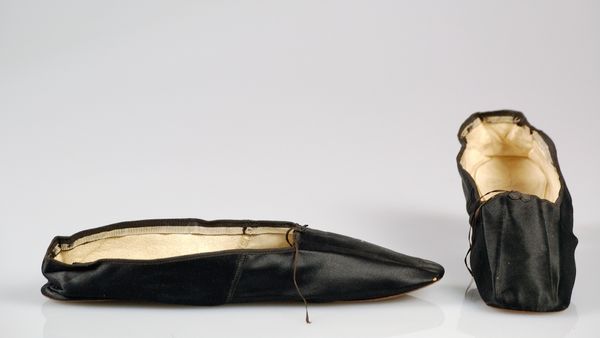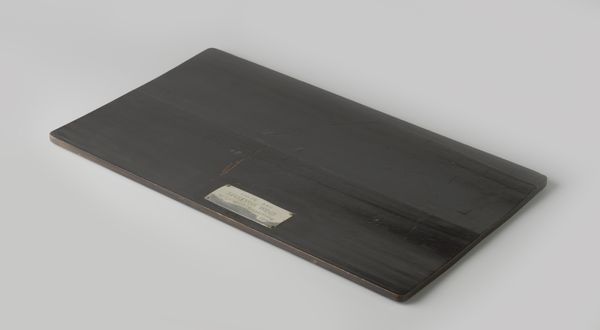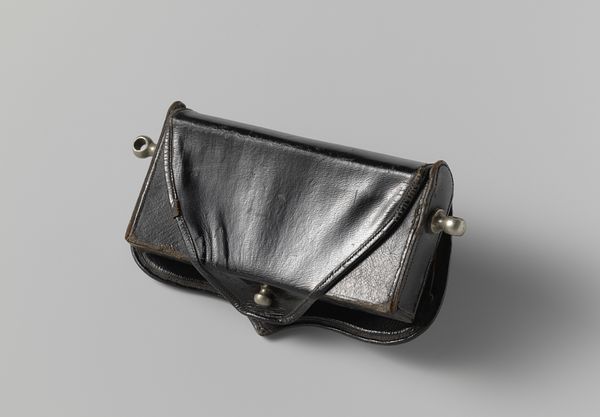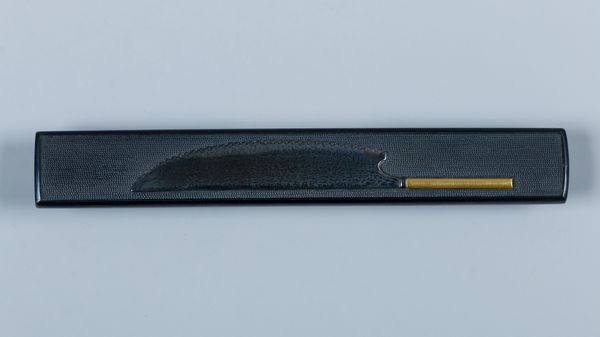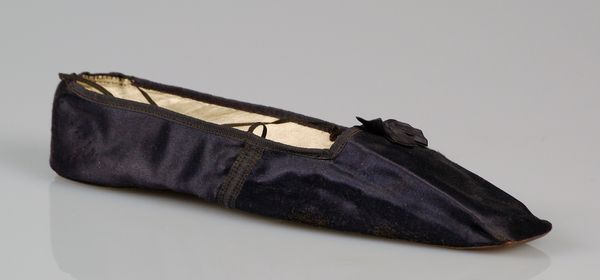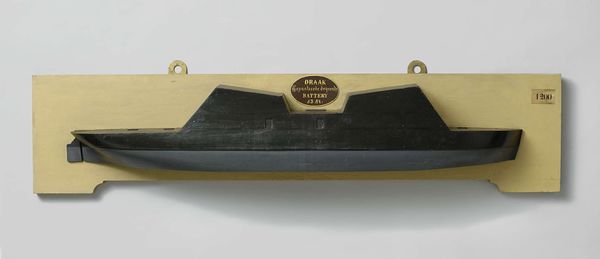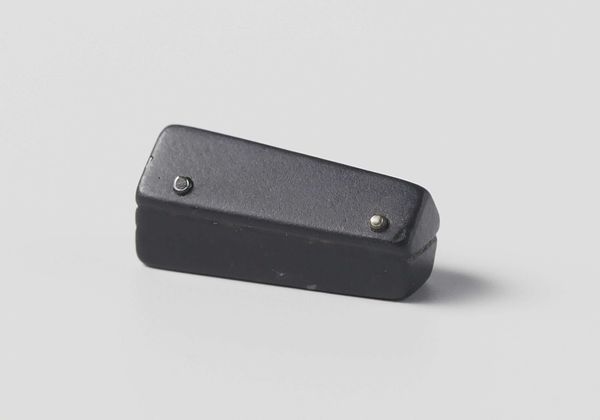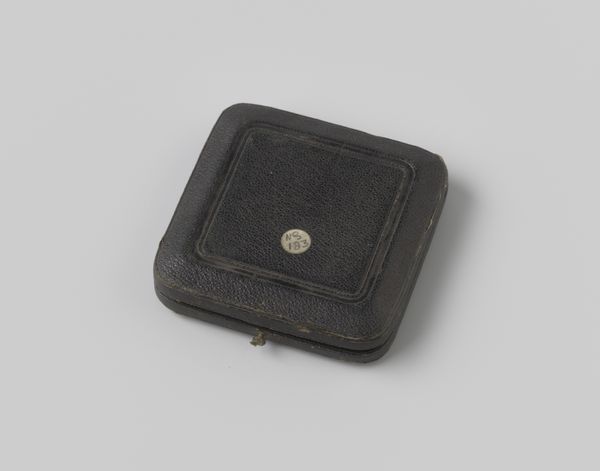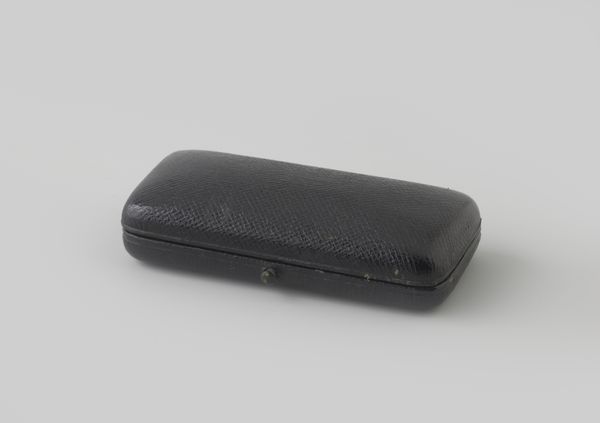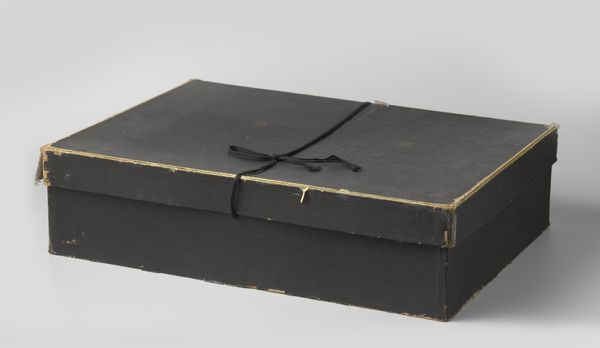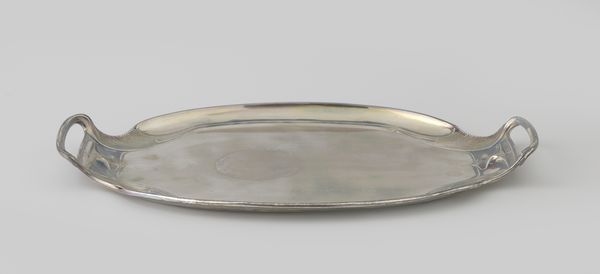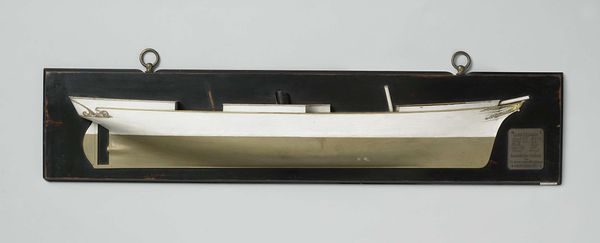
#
studio photography
#
3d printed part
#
product fashion photography
#
virtual 3d design
#
product design photgrpaphy
#
3d shape
#
metallic object render
#
product mock up
#
graphic design product photography
#
product photography
Dimensions: length 50 cm, width 21 cm, height 7 cm
Copyright: Rijks Museum: Open Domain
Editor: Here we have the “Blikken trommel behorende bij steek van ambassadeur A.H.J. Lovink," a metal tin box dating from around 1948, made by Firma Noyen. It's sleek, black, and geometrical, though showing wear. I am particularly interested in its irregular, almost asymmetrical triangular form. How do you approach a piece like this, with such focus on shape and form? Curator: The aesthetic interest lies precisely in the interplay of the geometric form and the texture, what semioticians call the signifier and signified. The box presents as a severely reduced form. Notice the interplay of sharp angles versus soft rounded corners, offset by the patinas and wear-marks that undermine its clean, industrial essence. Editor: It looks like there's even a partially peeled label. Does that add anything formally? Curator: It serves to further disrupt the severity of its initial presentation. The label acts as a deconstruction, fracturing the surface, thereby changing its visual language. It becomes less about pristine geometry and more about an object with a lived history inscribed on its very surface. Ask yourself, where does this deviation take your eye? How does it restructure the surface? Editor: That's fascinating, I was thinking the damage detracted, but I see now how it activates the surface. It forces us to consider it not just as an object but as something with age and use. Curator: Precisely. Formal analysis is about deconstructing the visual language to understand its full potential of meanings. Editor: So by considering form and surface, even imperfections, we arrive at richer appreciation. Thank you! Curator: A pleasure. Remember, form is never empty.
Comments
No comments
Be the first to comment and join the conversation on the ultimate creative platform.
